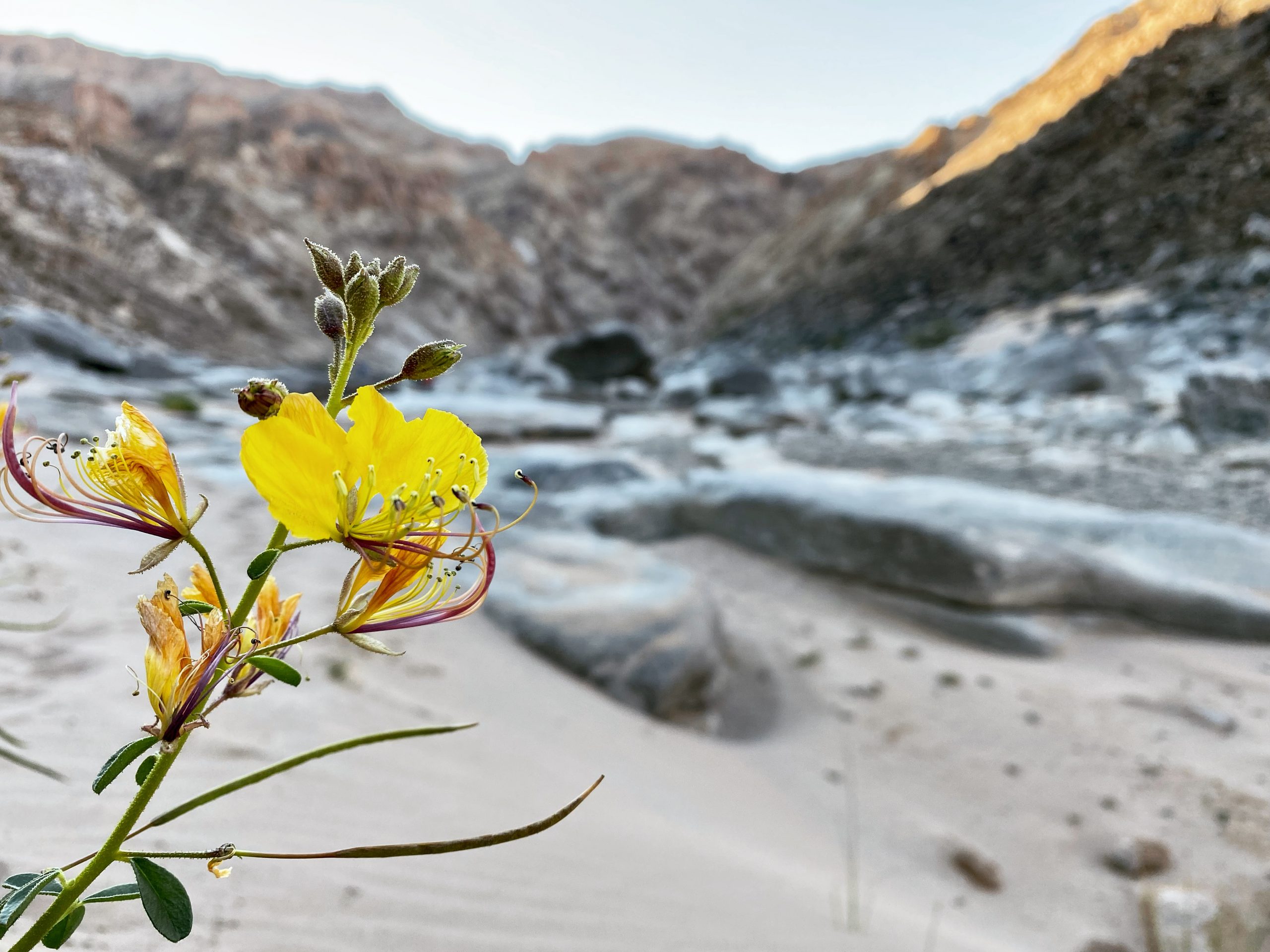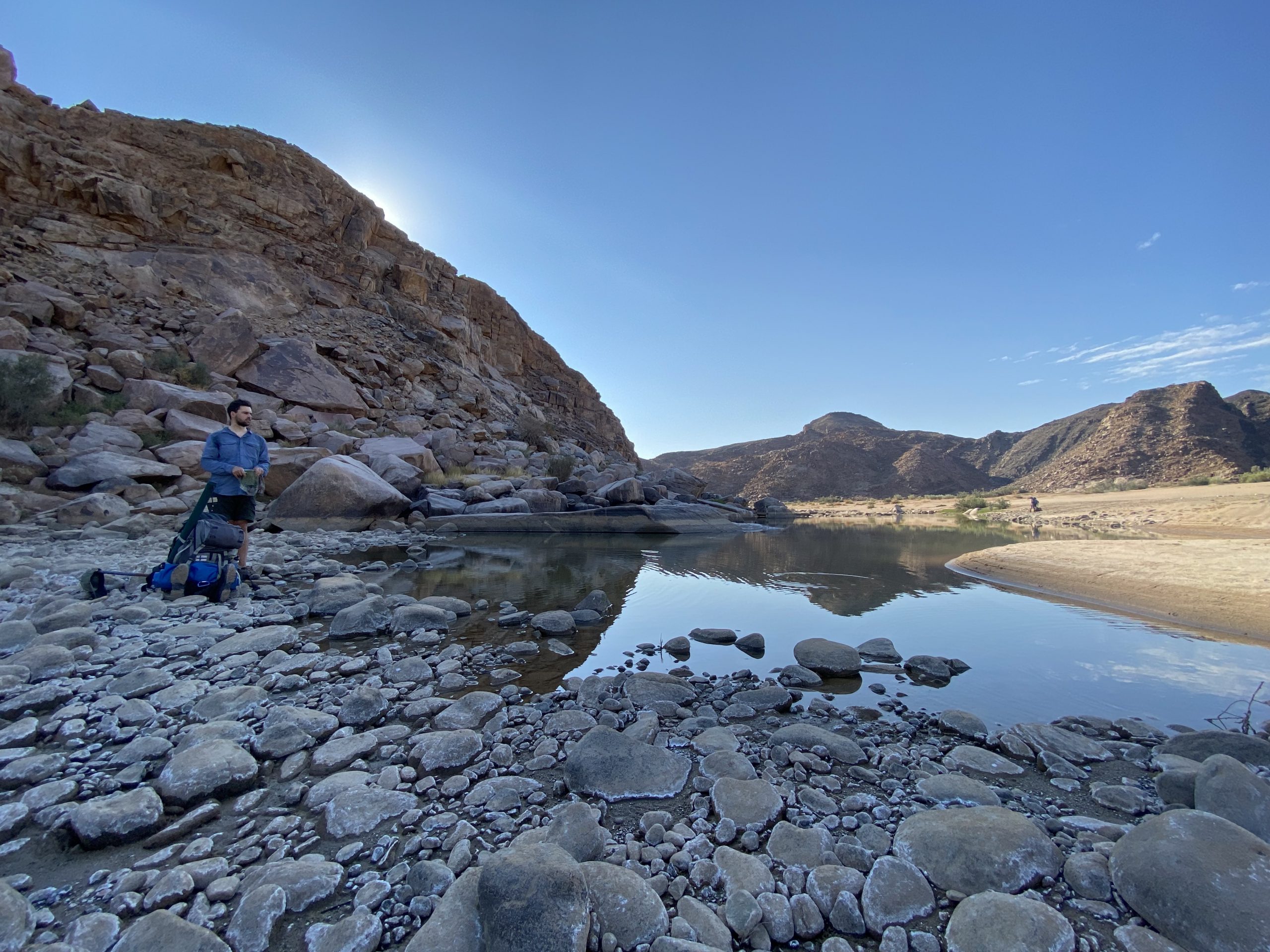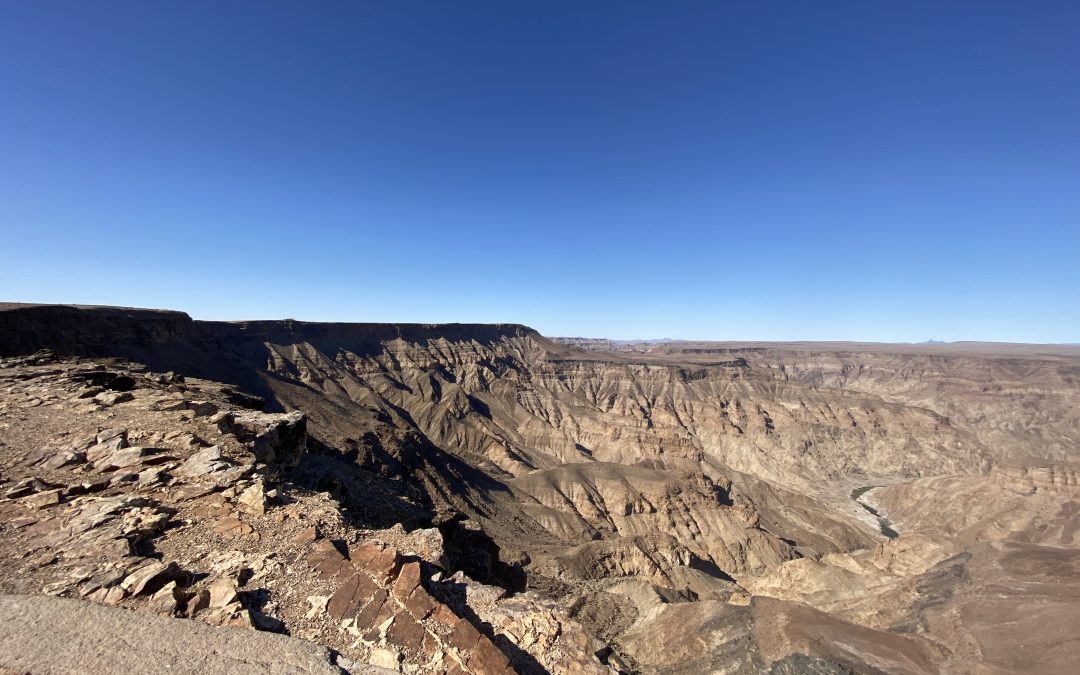To Fish or not to Fish, that is the question. This Shakespearean enquiry of self-motivation is usually applicable to angling-focussed adventures. But in this evaluation, the question is extended beyond face value and aimed at those considering to hike the famous Fish River Canyon hiking trail in Namibia. Why would one wander 65-90 km into a remote desert canyon completely unsupported? A strong case often made by them naysayers. We extracted a few pointers from our trip to help answer the question.
1. To plan
Originally a group of 14, we were whittled down to only 6 eager beavers thanks to a one-year Covid-postponement. More time to train and plan? Perhaps we should have. A few pre-hikes helped a lot, as did decent fitness levels to those who have it. Physical fitness aside, proper planning for the Fish is paramount. Personal anti-blister strategies, route plans, satellite phone setups and Weg/Go! article reviews are all part of the process. Decent minimalist menu and packing plans also go a long way, as Marc and Erhardt would attest to with their 20-odd kg bags filled mostly with alcohol.



2. To road trip
They say it is not all about the destination and, if you can make time, this is true for the Fish. Our group made the most of the long drive back by incorporating a spa-day at Ais-Ais and visit to Augrabies (Team Stocks & Snyman) and an ambitious Vioolsdrift detour to find some early season largemouth yellowfish (Team du Plessis). Side note: it was worth it.
3. To not die
Most folks believe The Descent into the canyon at the very start is the most difficult. Judging by the wobbly legs and a few curses along the way, this was true for some of us too. If you get over the fact that a misstep might well initiate an unpleasant and rocky plummet to an untimely death, it is in fact a beautiful winding trail with the dramatic landscapes towering above you. Upon reaching the river, a celebratory lunch served with a side of sand heightened our spirits for the first day.



4. To be awed
Everyone has their own reason for doing the Fish. Our personal highlight was the sheer awe-inspiring landscape that we found ourselves in. No photo or description can do it justice, and if the scale and majesty of the canyon does not humble you, nothing will. Although easy to sometimes overlook while focusing on the daily struggle of surviving, it was truly worth it to stop, look around and really take it all in every now and then.
5. To read a map
Planning the route for the day, and sticking to it, is crucial on a multi-day hike. After my slave-driving tendencies thankfully waned together with my energy levels, Marc realised his full potential as fearless explorer and sneakily managed the group’s daily expectations by stretching the fictitious daily distance goal beyond the real minimum. It also helps to combine map-reading with GPS tracking skills, as the intrepid family of Energiser bunnies we encountered would tell you after getting lost at, well, Lost Bend, and adding a casual 10 km in the midday sun.
6. To find joy
Everyone has their own thing that makes them tick. Although there are not heaps of downtime, it helps to make the most of your time on the Fish. Sonja took pro-level photos with her fancy mirrorless, Simoné sketched the beautiful landscapes in her journal, and I dabbled with a fly-rod in the pools of course.

7. To hydrate
It goes without saying that plenty of fluid intake is a good idea when slogging through a semi-desert. Luckily the river is close by throughout the trail. A word of caution though – make sure you have water purification methods and some Game (season to taste), and don’t drink from the river within a few kilometres downstream of Sulphur Springs. Both Erhardt and myself can testify that a very long night or day will follow if you do this.
8. To gaze
A paradox of wilderness hikes is often that the night sky will be spectacular beyond measure, but that you will be too tired to gaze at it for long. Nowhere else is this truer than on the Fish. Set that timelapse video, look up from the campfire, or fall asleep under at the Milky Way in all its wonderful glory.
9. To endure
Many folks do the Fish solely to test their physical and mental endurance. Although it was not the main priority in our group, tested thou shalt be. It is a peculiar feeling on the morning of day 3 to barely be able to move from the previous day’s rock scrambling, but knowing that you simply have no choice in pushing on to the next bend. The human spirit and all that. The star of our show was Carlien who, after some of us were silently contemplating calling for air evacuation on day 2, endured and finished day 5 like a slow-motion Comrades athlete to Chariots of Fire.



10. To celebrate
As the rock signs promising cold beer start appearing near the end of the trail, the prospects of shade, ice-cold drinks and saucy hamburgers inspire you to dig for that last bit of energy. Although our expectations of a finish line ribbon and a throng of spectators slow-clapping us into Ais-Ais were not entirely matched, the celebratory lunch more than made up for it.
For us it had been 5 days of survival-mode focus, of early morning starts in the shade of the silent cliffs, of wondering at the grand scenery of this ancient canyon, of red sunsets while preparing hearty trail dinners, of starry African skies, and of appreciating the environment and your place in it. Many hikers return multiple times, and we got our own glimpse as to why. So, in case there was ever any doubt, the answer will always be, To Fish.


